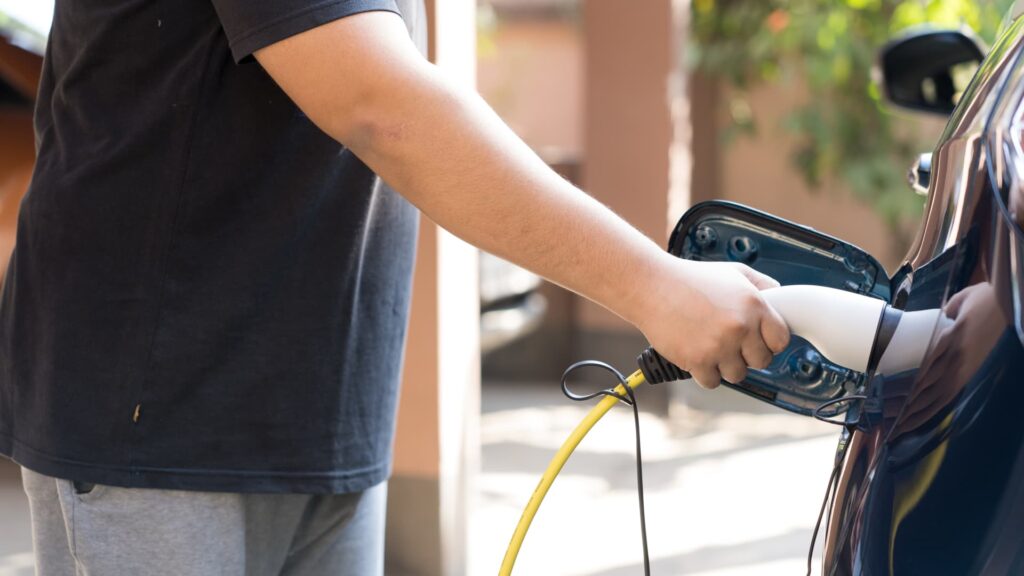Young man charges his electric car.
Tashdique Mehtaj Ahmed | Tashdique Mehtaj Ahmed Moments | Getty Images
When Carmelita Fernandes, who lives in the Indian city of Pune, switched from a regular car to an electric Tata Nixon for the first time in December 2021, she was excited about the journey ahead. After all, she said, it was a “five-star car and sales were really soaring in India at the time.”
More than two years after the switch, Fernandez regrets his decision: “I will never buy an electric car again.”
Within the first five months of purchase, Fernandez’s car battery died during the 180-kilometer (111-mile) drive from Pune to Mumbai, two cities in the western state of Maharashtra.
The battery of the electric SUV she bought for 1.4 million Indian rupees ($16,700) often drained faster than expected. “A 40% charge should easily get me another 40 kilometers, but within 5 kilometers it dropped to 0%,” Fernandez said.
“If I can’t drive four to five hours from Mumbai to Pune, I guess I won’t be able to use an electric car anywhere. It’s not possible to go to cities further away, like from Mumbai to Goa, a distance of about 600 kilometers. From each other, ” she told CNBC.
Fernandez’s story is not unique. Analysts say “range anxiety” remains a significant barrier to drivers switching from internal combustion engine cars to electric vehicles in India.
The world’s most populous country has an ambitious target of 30% of newly registered private cars being electric by 2030. Among passenger cars, the proportion of electric vehicles is less than 2.5%.
Partner Brajesh Chhibber said: “The charging infrastructure in the Indian EV market is not yet fully mature, but companies want more vehicles on the road before investing more. On the other hand, potential EV buyers first want more vehicles on the road. charger.
“It’s a chicken-and-egg problem,” Chibber told CNBC.
As of August 2023, Tata Motors holds 72% of the Indian electric vehicle market, followed by MG Motor with a 10.8% share. Canalys data shows EVs from Mahindra, Citroen, BYD, Hyundai and Kia account for the rest of the market.
Increase charging capacity
Industry experts told CNBC that strengthening India’s charging infrastructure is an important step that the Indian government needs to take to achieve its goal of universal electric vehicles by 2030.
India has the world’s second largest road network after the United States, with a total length of 6.3 million kilometers.
However, as of February, the world’s most populous country had about 12,100 public electric vehicle chargers, still far from the 1.32 million chargers needed by 2030.
But Mihir Sampat, a partner at Bain & Company in Mumbai, said charging companies are hesitant to expand infrastructure for fear of underutilizing it.
“The economics of operating a charging station fundamentally depend on how much the charger is used,” Sampat said. “Ideally, you want the charger to be used at least 15-20% of the time. To do that, the charger needs to be located Areas with dense electric vehicle populations.”
According to a report released by Bain last December, there are about 200 electric vehicles at each commercial charging point in India, compared with about 20 in the United States and less than 10 in China.
Fernandes narrated how, on her journey from Mumbai to Pune, she stopped at the Kalapur toll plaza on the Mumbai-Pune highway to charge her electric car. The charger had to be ordered far in advance or she wouldn’t be able to use it in time.
“Sometimes it requires me to wait more than two hours to charge my car,” she said. “I ended up using more power and wasting the battery by looking for a charger.”
McKinsey’s Chhibber added that while the Indian government has made significant progress in increasing the number of EV chargers on highways, infrastructure for intercity use near shopping malls and office towers also needs to be strengthened.
Other factors that hinder consumer churn
A lack of charging infrastructure isn’t the only problem facing EV drivers. Analysts say high costs and a lack of vehicle variety are two other factors holding back drivers from switching from internal combustion engine cars to electric vehicles.
India’s largest carmaker Maurti Suzuki will launch its first electric vehicle model next year. Tata offers only five EV models, while MG offers two, according to the company’s website.
“Customers are delaying the switch to electric vehicles and waiting for new products and a broader product portfolio to emerge,” Chhibber said.
“India remains a very price-sensitive four-wheeler market. Companies will have to develop low-cost electric vehicles that are comparable to internal combustion engine vehicles,” Bain & Company’s Sampat said, adding that battery costs first need to be reduced.
The Punch, one of Tata’s most popular ICE SUVs, starts at INR 612,900 ($7,300), while its electric cars start at INR 1.1 million ($13,100).
